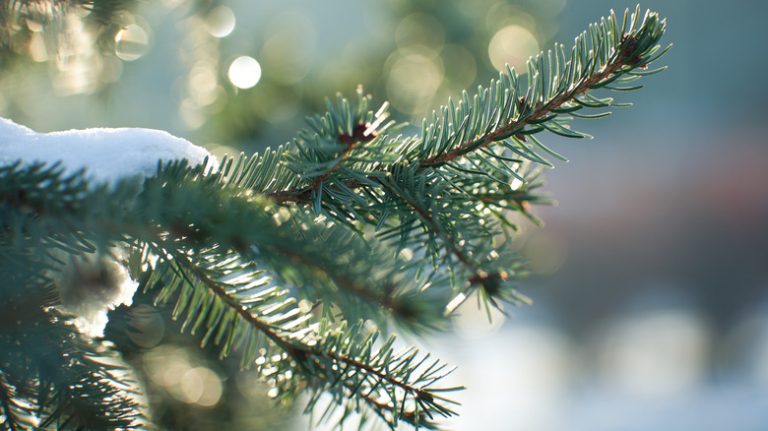Yaupon Holly, also known by its scientific name Ilex vomitoria, is a native plant that is commonly found in the southern United States. This evergreen shrub is a popular choice for landscaping in this region due to its attractive appearance and low maintenance requirements.
One of the distinctive features of Yaupon Holly is its dense foliage, which consists of thick, dark green leaves. The plant produces small white flowers in the summer, which are followed by bright red berries in the fall. These berries are a favorite food source for birds, making Yaupon Holly a wildlife-friendly option for your garden.
Yaupon Holly is a versatile plant that can be used in various ways. It can be grown as a hedge or a barrier plant to provide privacy and security. Alternatively, it can be pruned into a more compact and upright form, making it suitable for use in containers or as a focal point in a garden.
There are several varieties of Yaupon Holly available, each with its own slightly different characteristics. For example, the “Schillings” cultivar is known for its pendulous branches, while the “Taylor’s Dwarf” cultivar is a low-growing and compact option. Regardless of the variety you select, Yaupon Holly is a hardy plant that is well-adapted to the hot and humid climate of Houston.
In addition to its ornamental value, Yaupon Holly has also been used for culinary and medicinal purposes. Its leaves and twigs were traditionally used by Native American tribes to make a caffeine-rich beverage. However, it is important to note that the name “vomitoria” refers to the emetic properties of the plant, and consuming large quantities of Yaupon Holly can be toxic.
Overall, Yaupon Holly is a beautiful and versatile plant that is well-suited for cultivation in the southern United States. Whether you’re looking for an attractive addition to your garden or a natural barrier for your property, Yaupon Holly is definitely worth considering. Its low maintenance requirements and ability to thrive in a wide range of conditions make it a popular choice among garden enthusiasts and landscapers alike.
How to Grow and Care for Yaupon Holly
If you’re interested in growing Yaupon Holly at home, this guide will provide you with all the information you need to care for this beautiful plant. Yaupon Holly, or Ilex vomitoria, is a versatile evergreen shrub that is native to the southeastern United States. It is known for its glossy foliage and ability to thrive in a variety of growing conditions.
When it comes to planting Yaupon Holly, there are a few key things to keep in mind. First, it’s important to choose a suitable location for your plant. Yaupon Holly can be planted in full sun or partial shade, making it a great option for a wide range of gardens. However, it’s important to note that Yaupon Holly can tolerate a wide range of soil types, but it prefers well-draining soil. If the soil in your garden is heavy or clay-based, you may want to amend it with compost or organic matter to improve drainage.
Yaupon Holly is a relatively low-maintenance plant, but there are a few care tips you should keep in mind. During the summer months, Yaupon Holly will benefit from occasional watering, especially during dry spells. However, once established, Yaupon Holly is fairly drought-tolerant and can withstand short periods of dryness. Yaupon Holly also benefits from an annual application of compost or slow-release fertilizer in early spring.
When it comes to pruning Yaupon Holly, it’s important to note that Yaupon Holly is a dioecious plant, which means that it produces male and female flowers on separate plants. In order for the female plants to produce berries, you will need to have a nearby male plant. If there are no male Yaupon Holly plants nearby, you may need to consider planting a male variety, such as Folsom’s, Condeaux, or Burford. Keep in mind that Yaupon Holly can be pruned into a hedge or left to grow as a tree, so be sure to choose a variety that suits your specific needs.
One of the great things about Yaupon Holly is its disease resistance. Unlike other holly varieties, such as American Holly, Yaupon Holly is relatively free from disease and pest problems. However, there are a few common issues you may encounter. For example, Yaupon Holly can be susceptible to leaf spot, which can cause foliage to turn black. In order to prevent leaf spot, it’s important to provide adequate airflow around the plant by pruning and thinning as needed.
In conclusion, Yaupon Holly is a beautiful and versatile plant that is well-suited for growing in a variety of gardens. Whether you’re interested in creating a hedge or adding a touch of nature to your landscape, Yaupon Holly has something to offer every gardener. By following the tips and guidelines outlined in this reference, you can ensure that your Yaupon Holly plants will thrive and flourish.
What You’ll Learn
- Yaupon Holly can produce fine coffee-like beverages
- Before you visit yaupon holly, learn about the characteristics of this plant
- Discover the names and direct uses that natives have for yaupon holly
- Learn how to make yaupon holly condeaux using the leaves from the plant
- Coffee made from yaupon holly is a nearby option if you will ever run out of coffee
- Understand the balanced taste that yaupon holly coffee offers
- Learn how to select young yaupon holly leaves for making coffee
- Find out how yaupons can be back throughout the year
- Discover more about yaupon holly’s scientific name: Ilex vomitoria
- Learn why yaupon holly is a pride of Burford
- Grab a yaupon holly and choose a nearby container
- Understand the process of yaupon holly becoming flowers each year
- Learn how to grow yaupon holly from cuttings
- Discover the variety of yaupon holly, including ‘Nana’ and ‘Schillings’
- Learn why ‘Schillings’ variety has sterile male and female flowers
- Take note of the sweet foliage on yaupon holly
- Understand the jewel-like berries that yaupon holly produces
- Discover the alternate names for yaupon holly: Ilex vomitoria and Cassina
- Learn about yaupon holly’s preference for well-draining soil
- Explore how yaupon holly can break up thick clay soil
- Discover the compost that yaupon holly can attract
- Learn how to look for yaupon holly sprouts on the ground
- Find out how yaupon hollies can be used as screens
- Understand the characteristics of yaupon holly as a low-maintenance plant
- Learn why yaupon holly is a popular choice for coastal landscapes
- Discover how to locate a good spot for planting yaupon holly
- Find out about common diseases that yaupon holly may encounter
- Explore the scientific significance of yaupon holly: Ilex vomitoria
- Find out about the female cultivar ‘Folsom’s Weeping’
- Learn how to keep yaupon holly foliage looking compact
- Understand the care requirements for yaupon holly
- Discover why theres no need for excessive pruning with yaupon holly
- Find out how to keep yaupon holly looking good in your landscapes
Cultivation and History
The yaupon holly, scientifically known as Ilex vomitoria, is a species of holly native to the southeastern United States. It is a small evergreen tree or large shrub that can grow up to 25 feet tall. The leaves of the yaupon holly are glossy and have a leathery texture, and they produce small white flowers that bloom in the spring. The female plants produce small red fruit that are about half an inch in diameter.
The yaupon holly has a long history of cultivation and use by Native Americans. The berries were often steeped in water to make a caffeinated beverage called “black drink” or “cassina.” This drink was used in purification rituals and ceremonies, and it was believed to induce vomiting, hence the scientific name “vomitoria.” The yaupon holly has also been used by Native Americans for medicinal purposes, as well as for making arrow shafts and other tools.
Today, the yaupon holly is widely cultivated for its ornamental value. It is a popular choice for landscaping and is often used as a hedge, screen, or specimen plant. Its compact and rounded growth habit makes it easy to manage, and its glossy leaves and attractive red fruit add visual interest to any garden or landscape. The yaupon holly is also a favorite of wildlife, particularly birds, who feed on its berries.
When growing yaupon holly, it is important to select a location with well-drained soil and full sun to partial shade. The plant is adapted to a wide range of soil types and can tolerate some drought, though it prefers moist conditions. The yaupon holly is relatively low-maintenance and requires minimal pruning. It is resistant to most diseases and pests, and deer generally avoid eating it.
Propagation of the yaupon holly can be done through seed germination or by taking stem cuttings. Transplanting yaupon holly plants is also possible, though it is best done when the plants are young. It is recommended to fertilize the plants in early spring and again in late summer to promote healthy growth and fruit production.
The yaupon holly is a versatile and attractive plant that can be used in a variety of landscaping settings. Whether you are looking for a compact and showy specimen plant or a natural hedge to provide privacy, the yaupon holly can be a perfect choice. Its glossy leaves, white flowers, and red berries will add beauty and interest to your outdoor space all year round.



